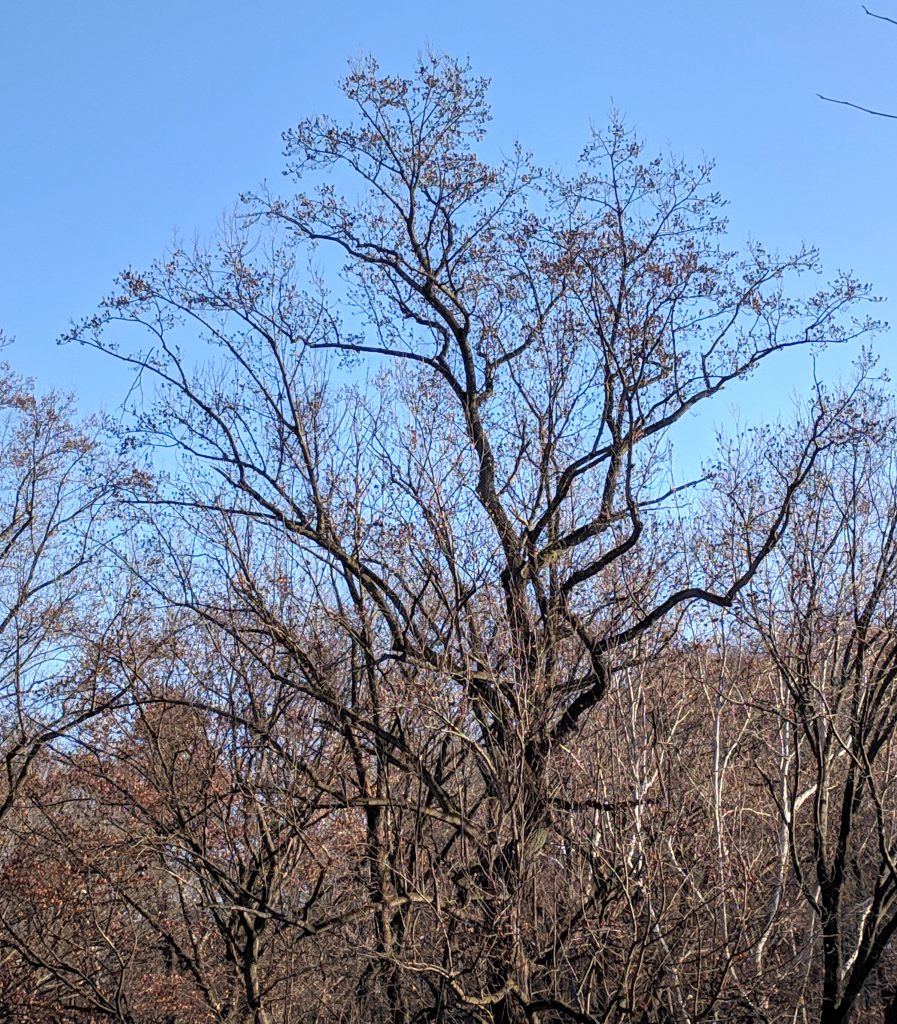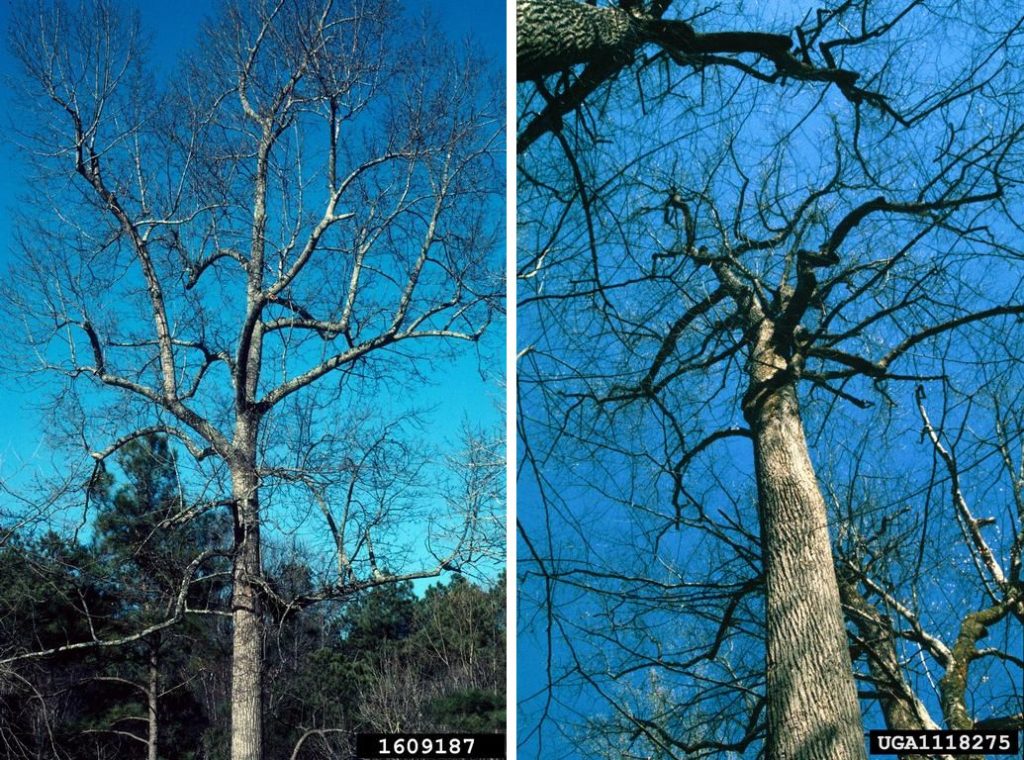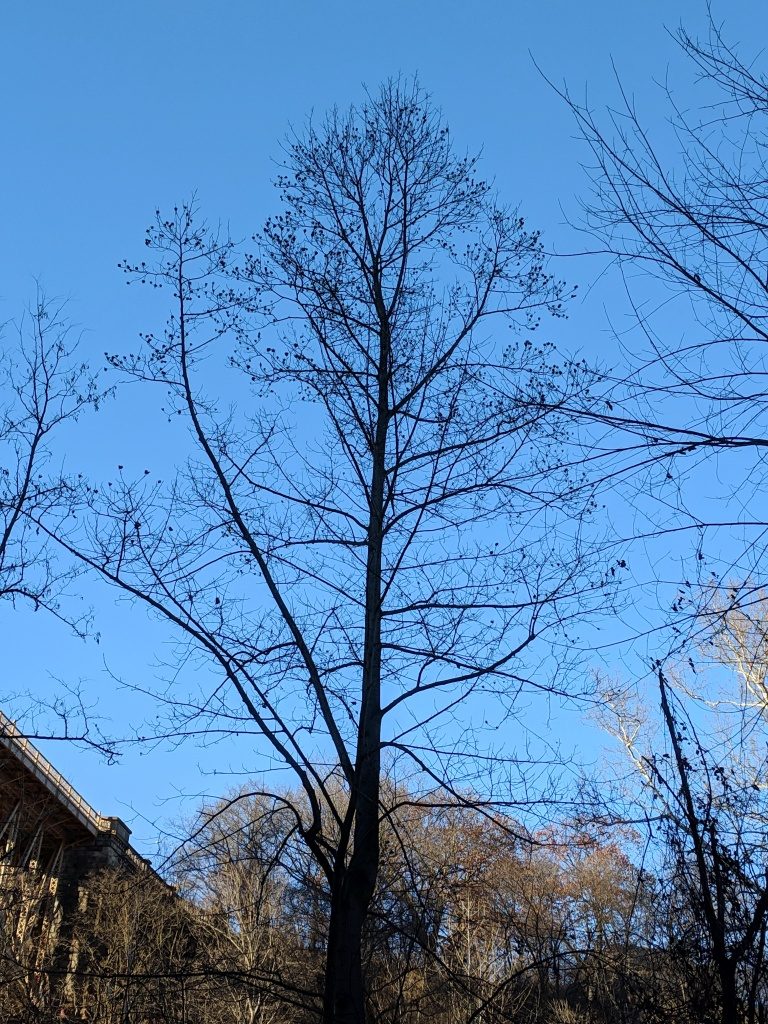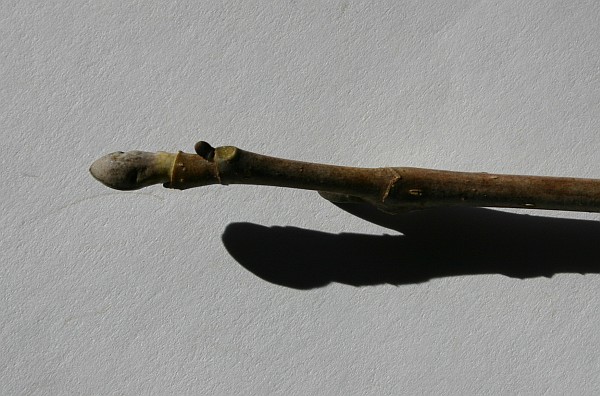
The Shapes of Trees continues today with the tuliptree or yellow-poplar, Liriodendron tulipifera.
Tuliptrees are the tallest eastern hardwood, 70 to 190 feet tall at maturity. They’re characterized by straight branch-less trunks for most of their height because they jettison their lower branches as they grow. The crowns have arching branches and up-swept twigs(*). On mature trees some branches are bent or zigzag, but they are never as gnarly as black locusts.
The photos below show their typical shape as seen from the side and below. Notice that the trunk is straight and limbless.

Younger trees have tapered tops like candle flames.

In early winter tuliptrees are still dotted with clustered samaras that look like pale wooden flowers, but you have to use binoculars to see them.
If you’re lucky to find a twig at eye level you can easily identify the tree by its large smooth end bud, shaped like a duck’s bill.

But the mature trees have no low hanging twigs so you’ll have to use other clues.
Learn how to identify tuliptrees in winter and see photos of the bark, buds and samaras in this vintage article: Winter Trees: Tuliptree.
(*) Quoted from The Sibley Guide to Trees, page 100.
(first photo and bud photo by Kate St. John. Tuliptrees in winter from Bugwood.org: 1609187 by John Ruter, Univ. GA, UGA1118275 by Brian Lockhart, USDA Forest Service. Click on these links to see the originals)